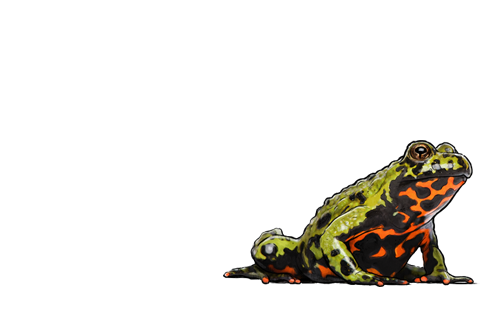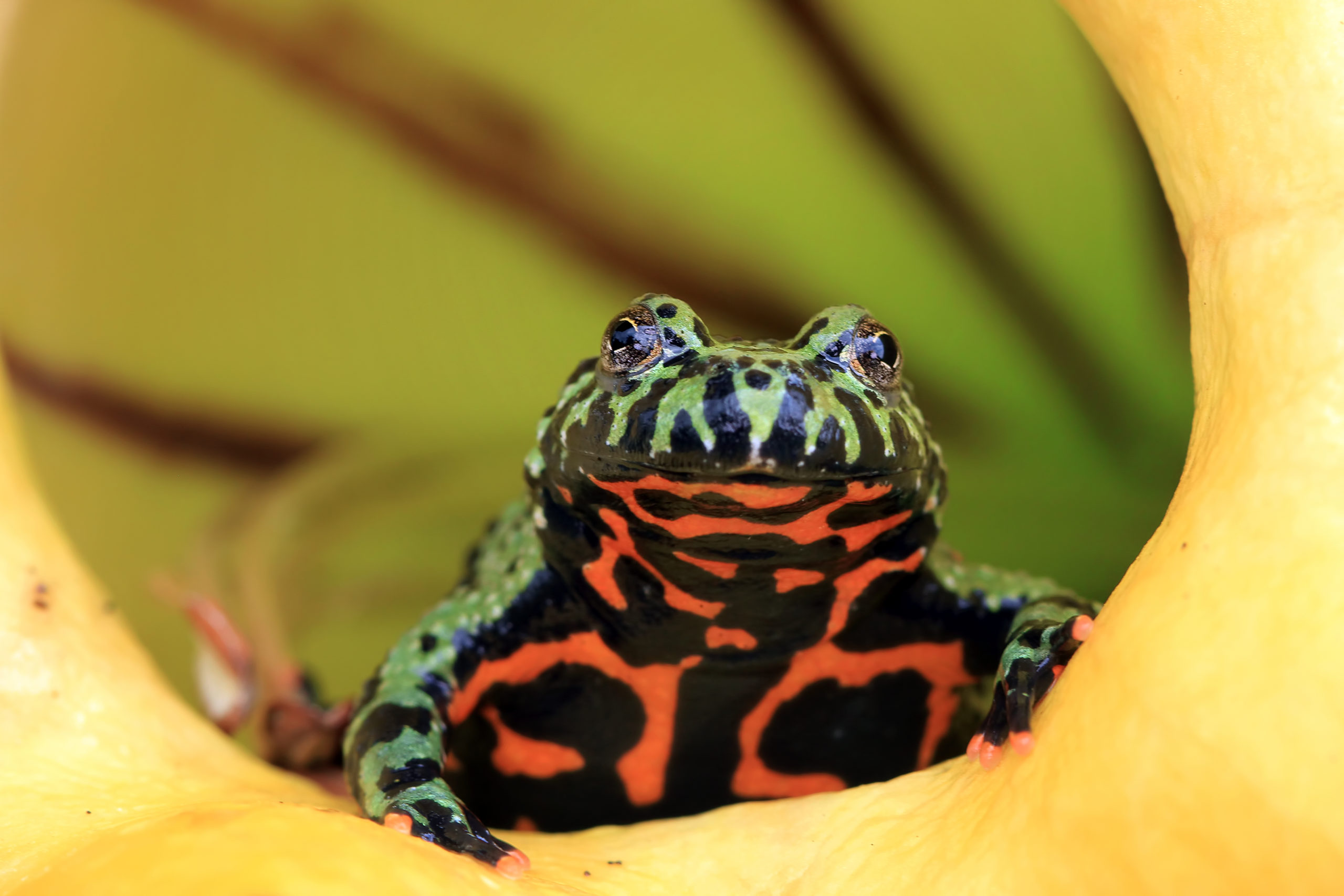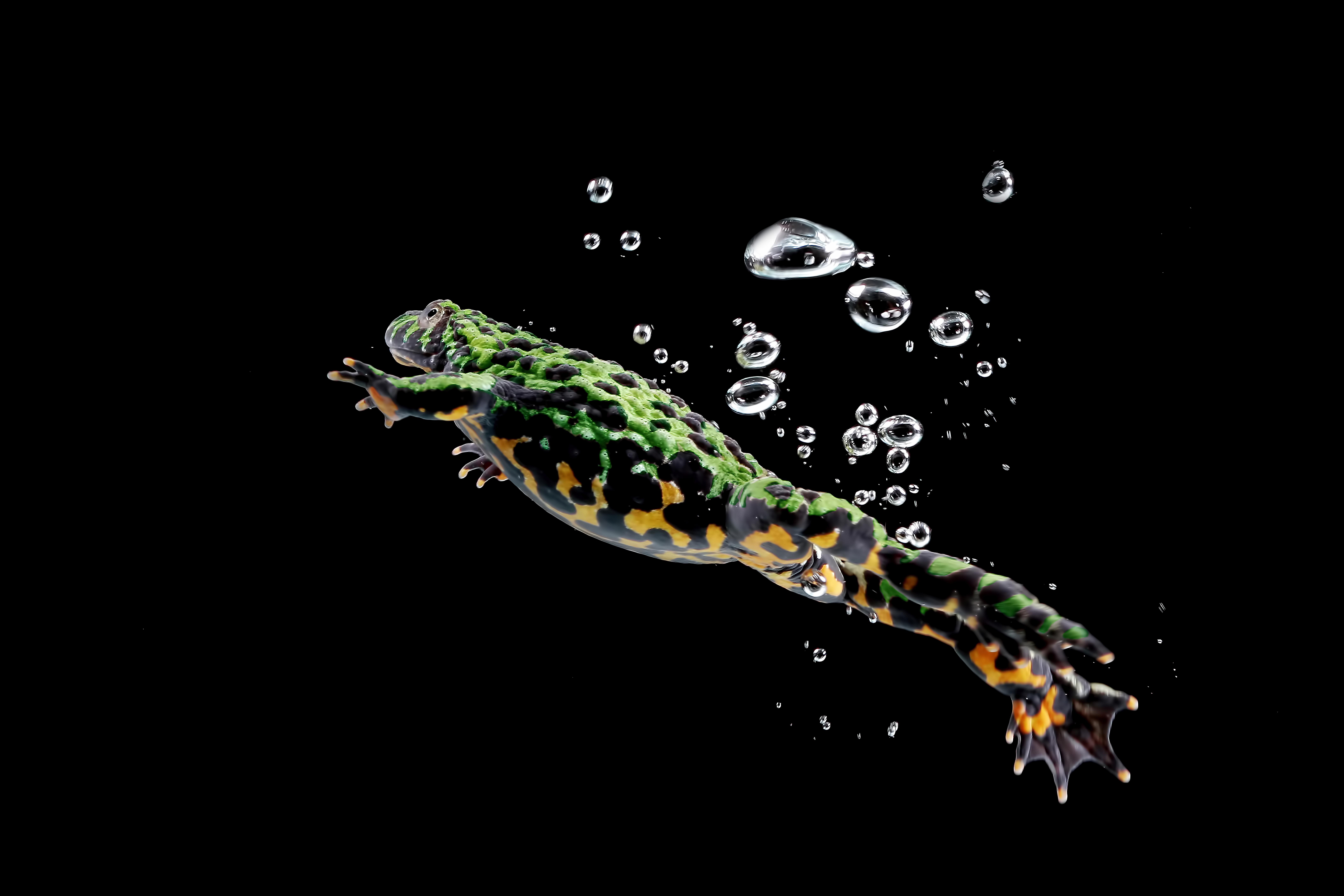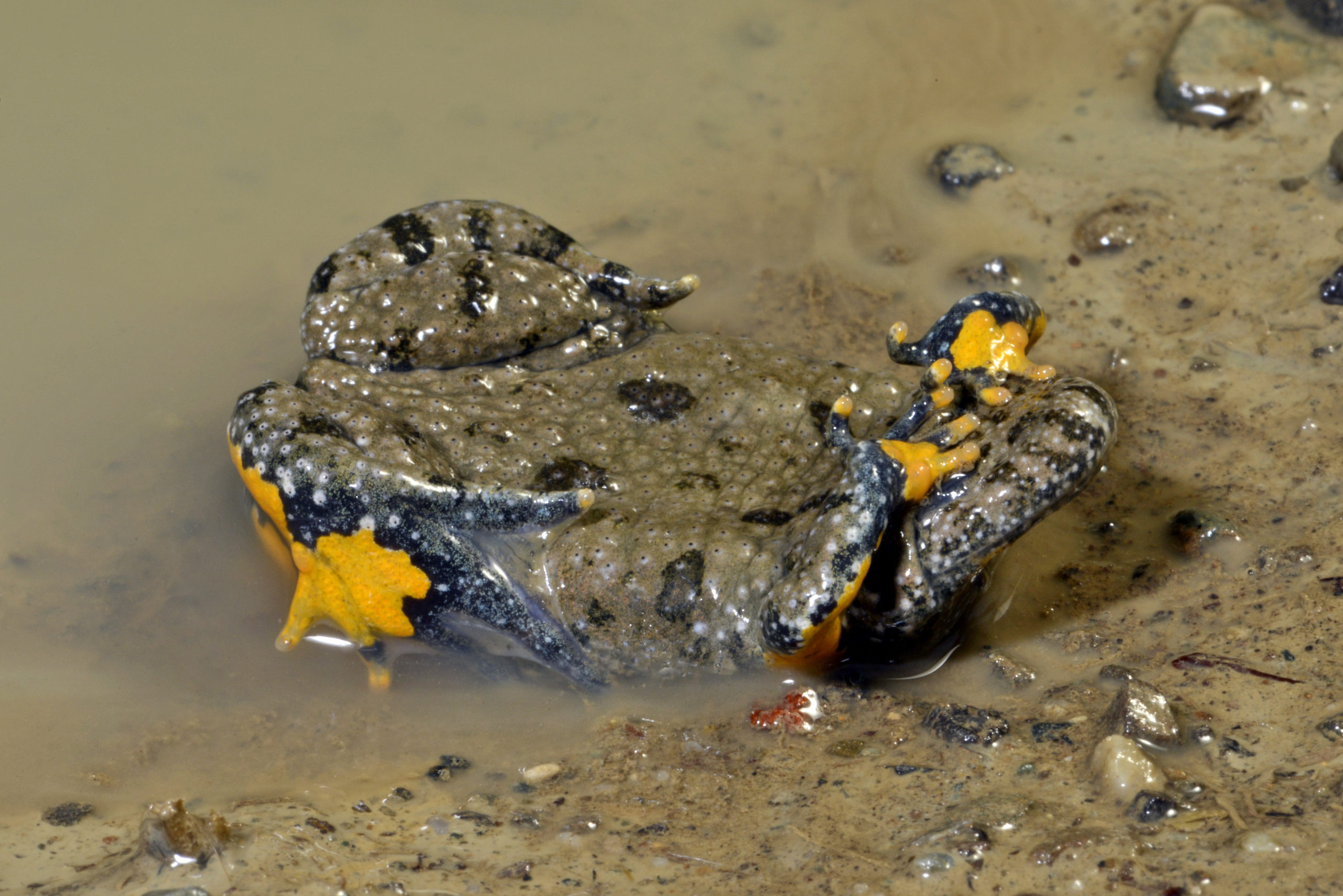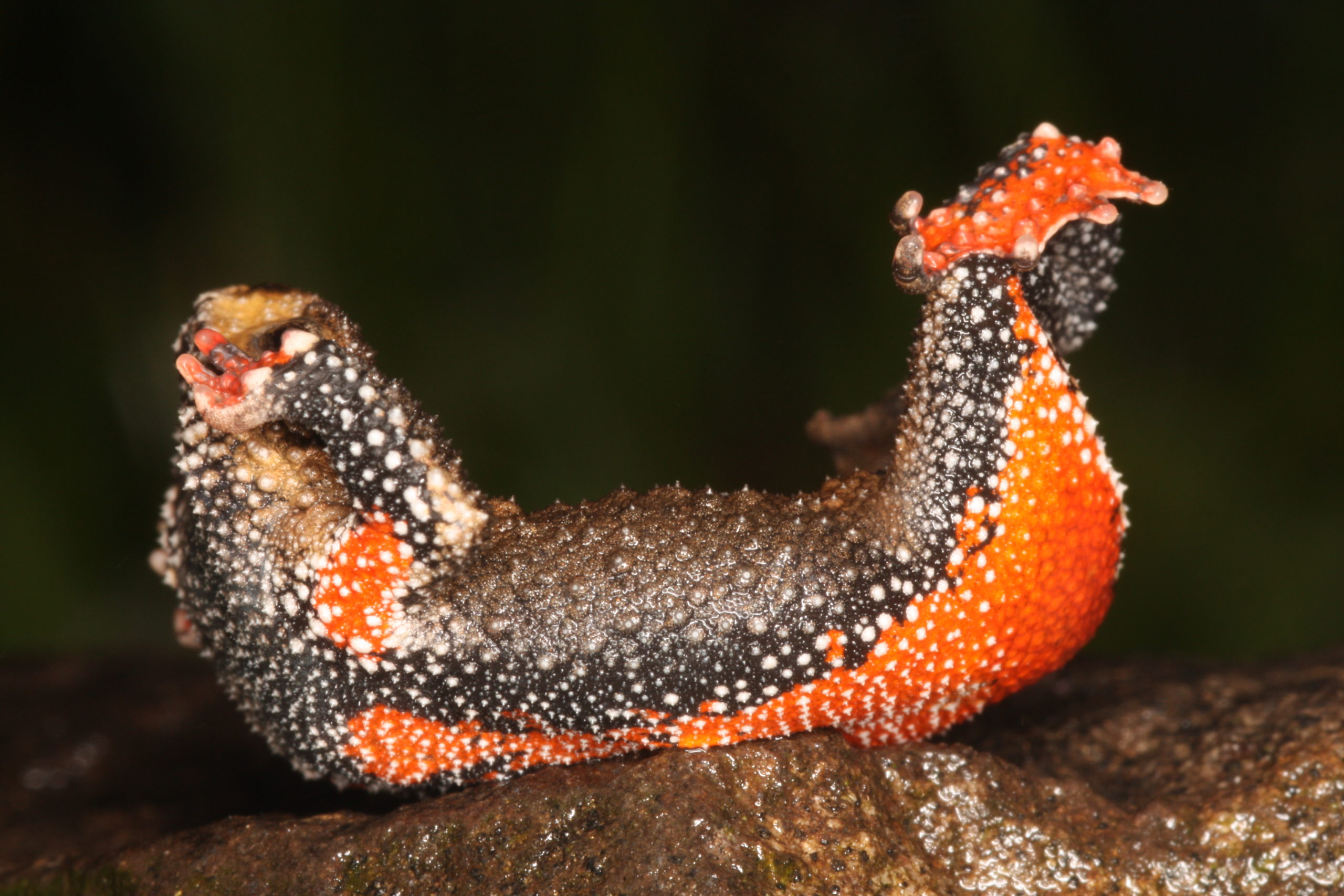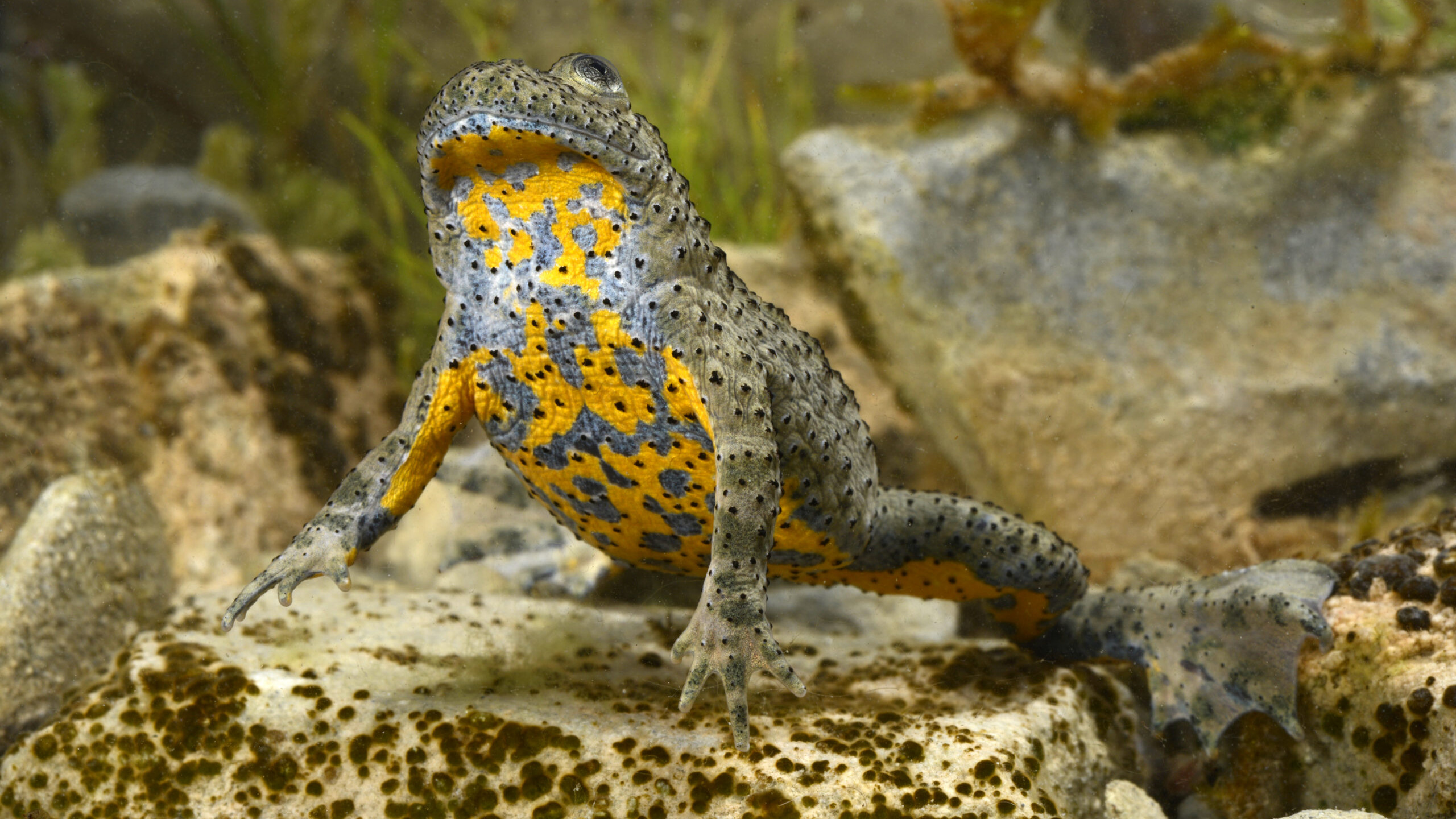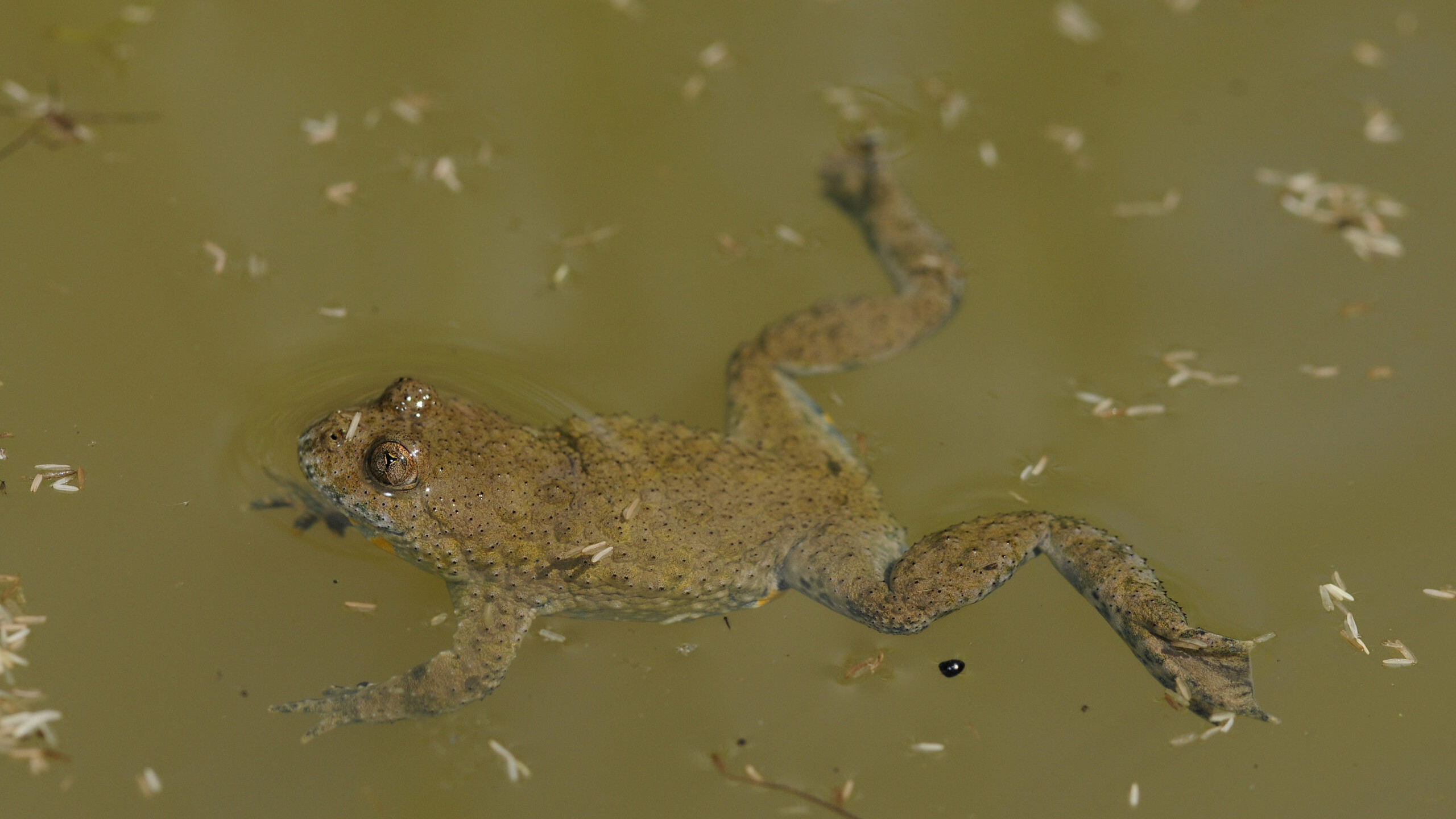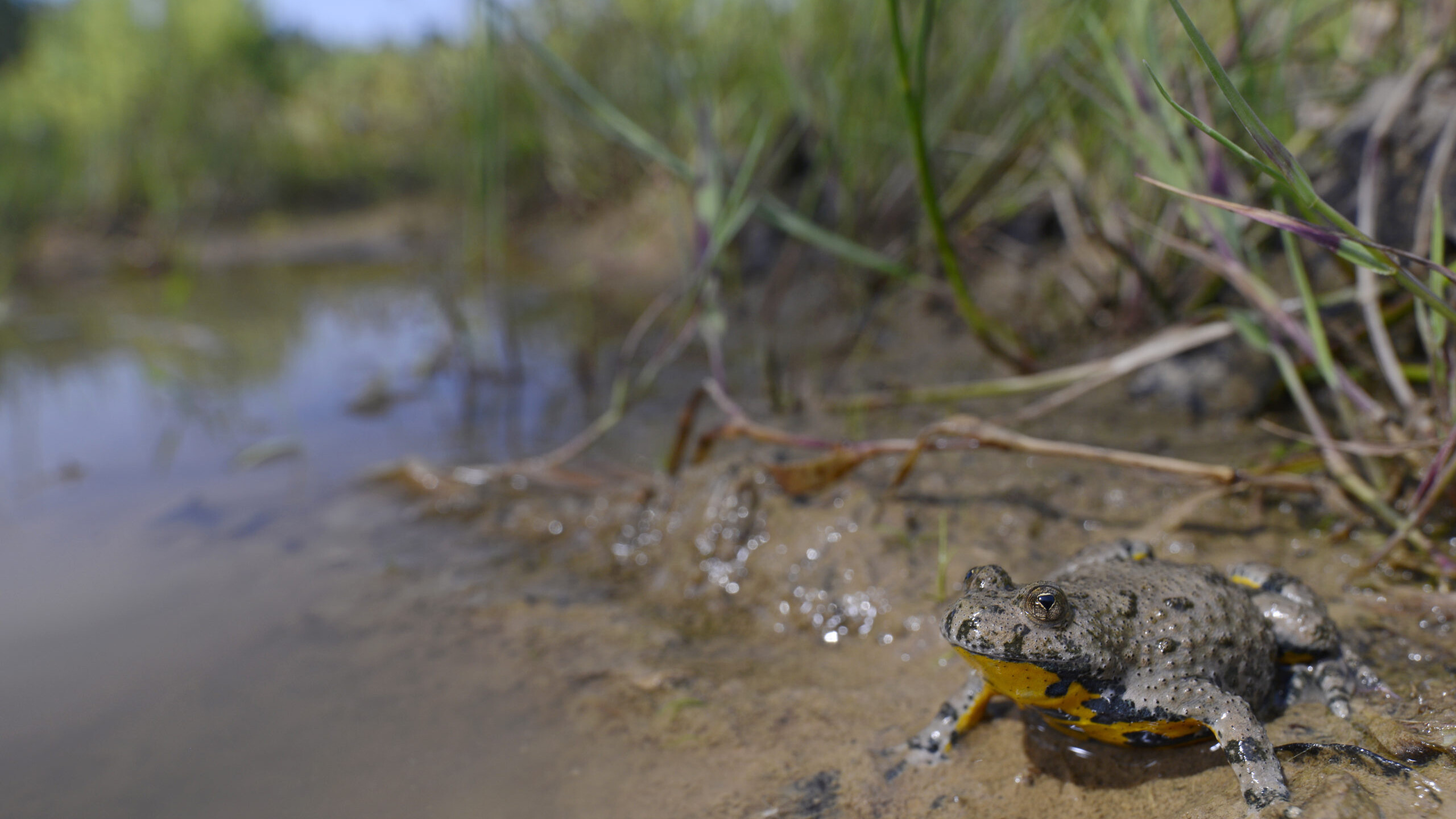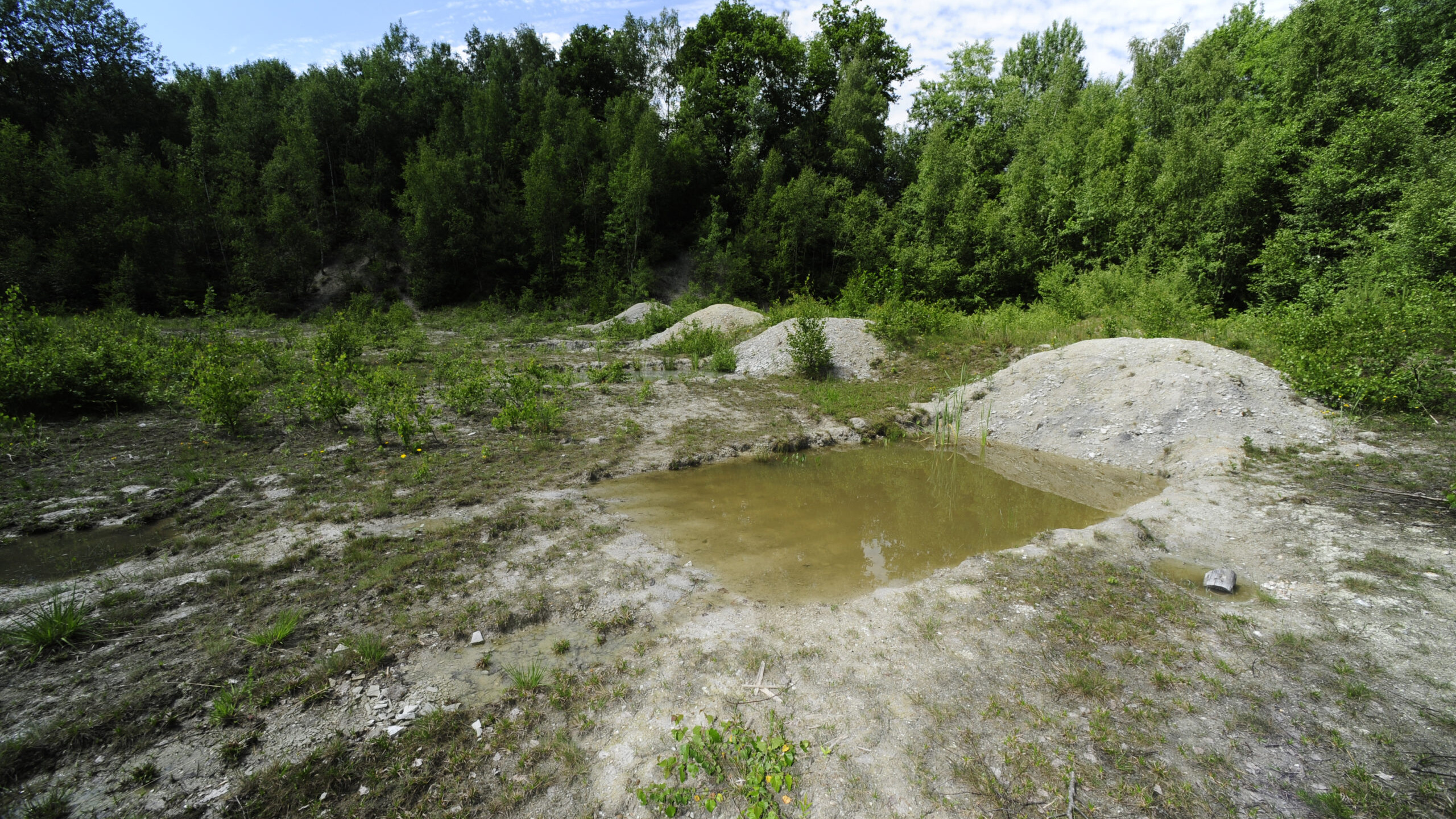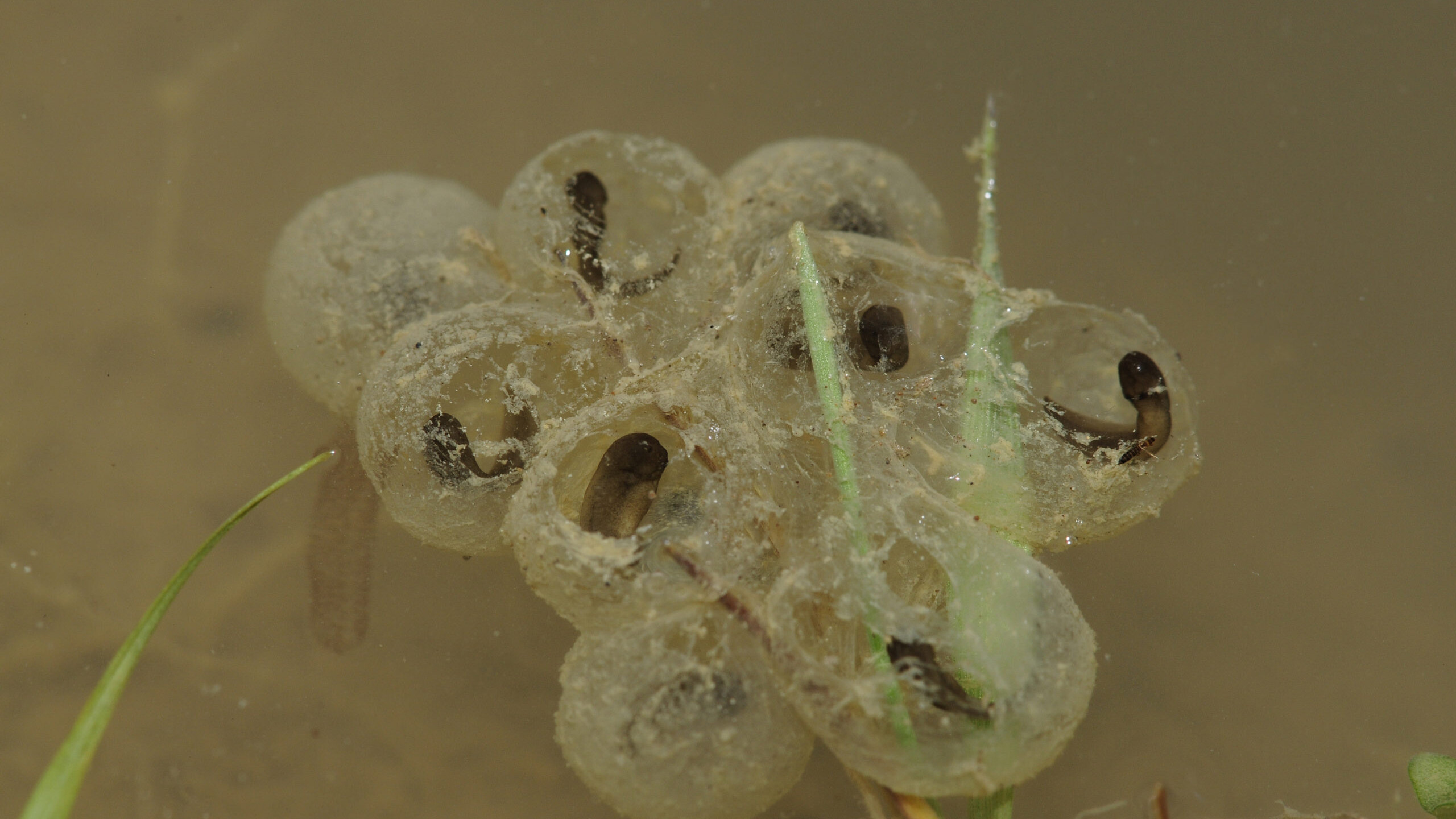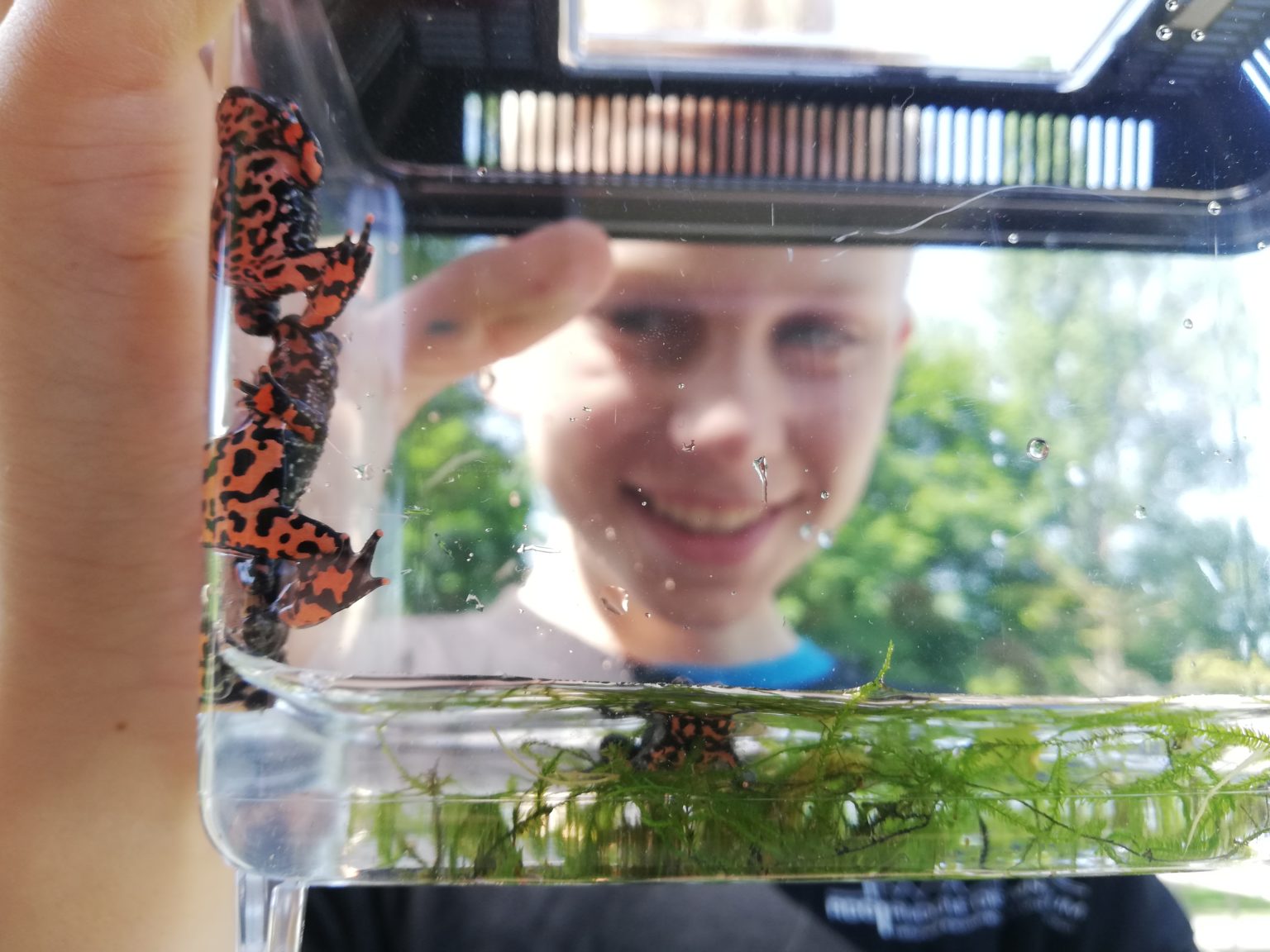Chinesische Rotbauchunke
Bombina orientalis
Chinesische Rotbauchunke
Bombina orientalis
Zielvorgabe CC
60 Haltende
Stand 05/2025
Zielvorgabe CC
225 Tiere
Stand 05/2025
Zielvorgabe CC
60 Haltende
Stand 05/2025
Zielvorgabe CC
225 Tiere
Stand 05/2025
Wenn man jemandem vorwirft, er unke herum, ist das nicht gerade ein Kompliment. Das Verb „unken“ steht im Volksmund für Schwarzsehen, übertrieben pessimistisch sein.
Quicklebendig statt unheilvoll-traurig
Literaturnobelpreisträger Günter Grass hat einen seiner Romane „Unkenrufe“ genannt, weil es darin um Tote und Bestattungen geht. Traditionell wird der Ruf dieser Amphibien mit Unheil, Tod und Traurigkeit verbunden. Der Grund dafür liegt im tiefen, reichweitenstarken Ruf der in Mitteleuropa heimischen Rotbauchunke (Bombina bombina), der für menschliche Ohren wehklagend klingt. Dabei zeugt er vom blanken Gegenteil: Das Unkenmännchen ist in Wallung und will eine Partnerin zwecks Zeugung einer neuen Generation anlocken. Pure Lebenslust statt Todessehnsucht.
El Unkenreflex
Einzigartiges Gequake
Dabei haben Unken ein Alleinstellungsmerkmal: Sie sind die einzigen Froschlurche, die während des Einatmens rufen. Als Resonanzraum kann ihnen daher neben der Schallblase, über die andere Frösche und Kröten beim Herauspressen von Luft ihren Ruf in die Welt aussenden, auch die Lunge selbst dienen. Dementsprechend sieht ein rufendes Unkenmännchen aus wie ein Blasebalg, bei dem sich die Seiten aufblähen und wieder einfallen.
Lokal gefährdet
Sympathische Lurche für zu Hause
Besonders die Chinesische Rotbauchunke eignet sich hervorragend für die Haltung im Aquaterrarium. Sie gehört daher zu den wenigen Amphibienarten, die seit langer Zeit in größerer Stückzahl für den kommerziellen Zoohandel nach Europa importiert werden. Dagegen wäre nichts zu sagen, denn die charmanten Tiere sind leicht zu halten, sehr aktiv, zeigen ein interessantes Verhalten und sind deshalb sympathische Amphibien für zu Hause. Sie können auch Einsteigern bedenkenlos empfohlen werden, weil ihre Bedürfnisse leicht zu erfüllen sind. Die Art ist auch nicht bedroht.
Homegrown-Bio-Fairtrade-Unken statt Wildfänge und Großimporte
Neue Lurch-Haltende schaffen, heißt Artenschutz-Kapazitäten schaffen
Was aber macht die Chinesische Rotbauchunke dann bei Citizen Conservation? Zum einen ist sie eine geradezu perfekte Art für Einsteiger und Schulen, die attraktive und zugleich pflegeleichte Tiere suchen, um grundlegende Beobachtungen an Amphibien tätigen zu können, Sympathie für diese verletzliche Tiergruppe zu schaffen und terraristisches Grundwissen zu erlernen. Das ist ganz im Sinne der CC-Philosophie: Kapazitäten schaffen für den Artenschutz! Denn wer später hoch bedrohte, schwierig zu pflegende Amphibienarten für Erhaltungszuchten halten will, muss den Umgang mit diesen Tieren erst einmal erlernt haben.
Mattis mit Nachzuchten der Chinesischen Rotbauchunke. Der Schüler vom Rudolf-Diesel-Gymnasium in Augsburg macht mit seinem Wahlkurs Terraristik mit beim CC-Unkenprojekt. © Markus Pfister
Seuchenprävention durch „Unken aus regionalem Anbau“
Noch wichtiger aber: Die für unsere heimischen Amphibien extrem gefährlichen Chytridpilze stammen offenbar aus Ostasien – ebenso wie die Chinesischen Rotbauchunken. Es ist also denkbar, dass mit den Unken neue, gefährlichere Varianten der Pilze importiert werden. Zumal zumindest in einem Einzelfall auch der Salamanderfresserpilz Bsal auf asiatischen Unken nachgewiesen wurde. Und warum dieses Risiko eingehen, wo Chinesische Rotbauchunken doch sehr gut bei uns gezüchtet werden können? Auch aus Tierschutzsicht ist es besser, wenn hier liebevoll aufgezogene Terrariennachzuchten angeboten werden statt Importe aus Fernost, die eine lange Reise und diverse Zwischenhälterungen hinter sich haben. Zumal die Unkenbestände auch in Ostasien abnehmen. Zwar weniger durch Fang für den Heimtiermarkt als durch die üblichen Gefährdungsfaktoren wie Lebensraumzerstörung durch Trockenlegen von Feuchtgebieten und Umweltverschmutzung, dennoch ist es ganz unnötig, zusätzlich Tiere zu entnehmen, die man problemlos auch hier züchten kann. Homegrown-Bio-Fairtrade-Unken sozusagen statt Wildfänge und Großimporte. Deshalb will CC durch eigene Nachzuchten die berechtigte Nachfrage des Zoohandels nach diesen attraktiven Tieren decken oder zumindest die Zahl der Tiere, die eingeführt werden, zu reduzieren helfen.
Für Halter
Basisinformationen zu Biologie und Haltung
Die Unken werden in mittelgroßen Paludarien oder Aquaterrarien mit einem Landteil durch Korkstücke oder Steinaufbauten gepflegt. Mehrere Männchen und Weibchen können zusammengehalten werden. Zimmertemperatur und einfache Grundbeleuchtung sind ausreichend. Zucht nach kühler Überwinterung. Aufzucht der allesfressenden Kaulquappen im Aquarium.

